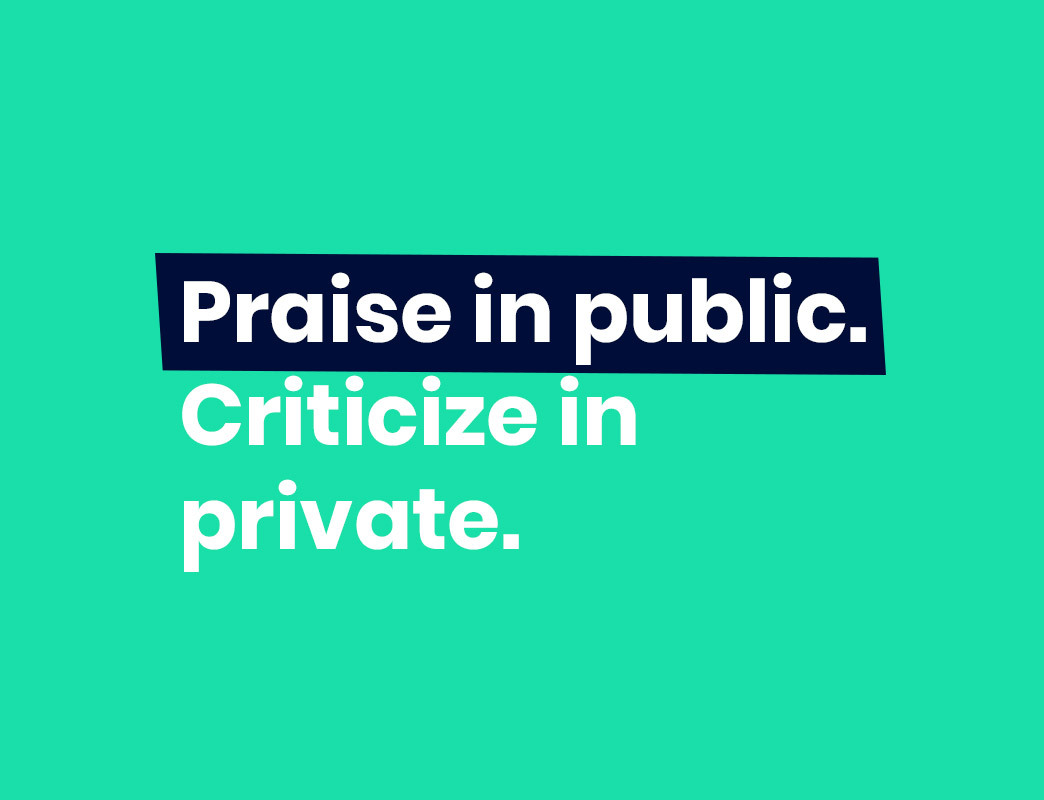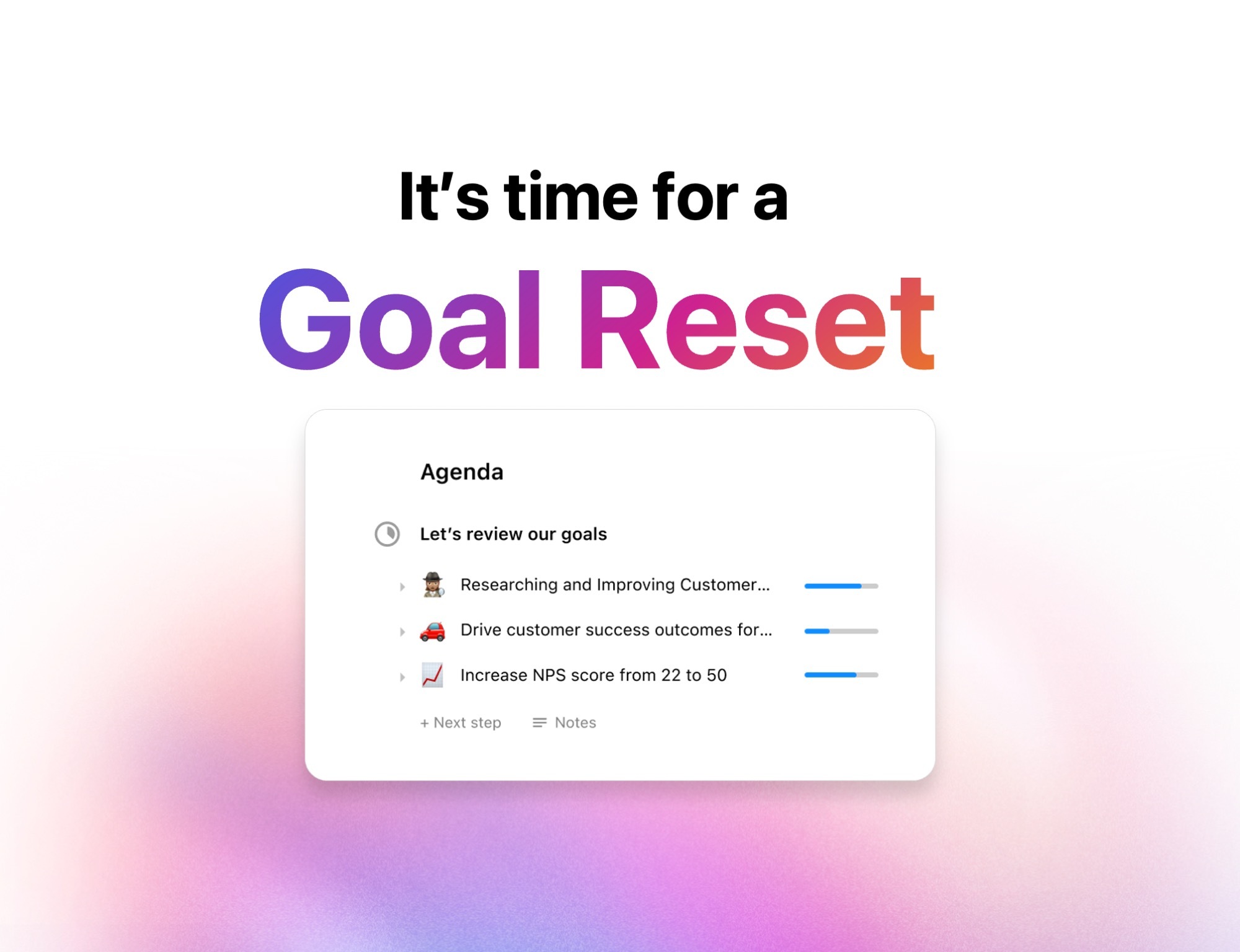Constructive feedback examples: 4-step guide
7 min readIt can be difficult to give effective constructive feedback. But getting it right makes all the difference for your team. Here's a guide to improve how you approach difficult conversations.

Constructive feedback is essential to the growth of your team and organization. Yet so few of us are good at providing it effectively.
In a new TED Talk series The Way We Work, Cognitive psychologist LeeAnn Renninger explains how we can improve the way we deliver feedback.
According to Renninger, most managers are either too indirect or too direct when reviewing performance with employees.
How do you find the happy medium?
By studying the approaches of great feedback givers across many companies, Renninger found that there’s a common 4-part formula to help guide difficult conversations.
In this article, we’ll walk through:
- Where and when to give feedback
- Renninger’s 4-part formula to constructive feedback
- 5 Constructive feedback examples
Where and when to give feedback
While constructive feedback is important, it has a time and a place.
Repeat after us…
Praise in public and criticize in private.
How you give feedback depends on the type of feedback you’re sharing. If you’re sharing positive feedback, shout it from the rooftops! Recognize your employees in public and private settings, including:
- One-on-one meetings
- Team meetings
- Company-wide meetings
Constructive criticism, on the other hand, shouldn’t be shared publicly. Singling out an employee with constructive feedback in a public setting can be alienating and embarrassing. Save these conversations for your one-on-ones, where you can address constructive feedback in a private and safe space. If you need help approaching the conversation, try a one-on-one software to help structure the conversation.
Renninger’s 4-part formula to constructive feedback
The beauty of Renninger’s formula is how simple it is. Breaking down barriers, including mental ones, when giving feedback will enable you and your team to continuously share feedback with one another. This 4-step formula will help you break down those mental barriers:
1. The micro-yes 👍
Ask a short but important yes or no question to start the conversation. The reason for this opening question is two-fold. It lets your team member know that feedback is coming. It also allows the opportunity for buy-in, creating a feeling of autonomy.
Putting it into practice:
“Can we talk about your workload and how you’re managing it?”
2. Get specific 🎯
Provide an objective and specific example of the issue you’re addressing. This is your data point. At this stage of feedback, it’s best to avoid general statements, or “blur” words like, ❌ “you could be more proactive.” When you get specific, the recipient will have a better understanding of how to improve.
One thing to keep in mind when sharing feedback is the importance of doing it in a way that best suits your direct report. Do they prefer written feedback? Add it to your meeting agenda ahead of time.
Putting it into practice:
“Last week, you sent your team’s goal progress report to me a day late.”
3. Show impact 🌊
You just presented your data point – so what? It’s important to align your feedback with the impact. Before sharing your feedback, ask yourself:
- How did that specific situation impact the team?
- What were the ramifications?
- Why did this happen?
Our brain craves reasoning and logic to help us move forward. Demonstrate the impact of your team member’s actions on the team or project. Help them understand why something is a big deal (if it is).
Putting it into practice:
“Because of that, I had to rearrange my whole schedule to dive through your metrics and get it to the leadership team on time.”
4. Ask a question ❓
Remember that this is a conversation, not a monologue! When you wrap up the conversation with a question, it helps create a shared commitment. You’re in it together.
Putting it into practice:
“It may be helpful to evaluate your current workload together and see where we can prioritize to avoid a situation like this in the future. What do you think?”
Constructive feedback examples for common workplace situations
Let’s put the framework into action with five specific examples.
Time management challenges
- [Micro-yes] Can we talk about your workload and how you’re managing it?
- [Getting specific] Last week, you sent your team’s goal progress report to me a day late.
- [Showing impact] Because of that, I had to rearrange my whole schedule to dive through your metrics and get it to the leadership team on time.
- [Ask a question] It may be helpful to evaluate your current workload together and see where we can prioritize to avoid a situation like this in the future. What do you think?
A bad attitude at work
- [Micro-yes] Can we talk about the meeting yesterday?
- [Getting specific] I noticed you were rolling your eyes while Mark was speaking.
- [Showing impact] I felt that it created some hostility and awkwardness in the room.
- [Ask a question] What’s going on there?
Consistently late to meetings
- [Micro-yes] Recently, you’ve been late for a lot of meetings. Do you have a couple of minutes to talk about how we can overcome this?
- [Getting specific] In this morning’s meeting, you were 15 minutes late.
- [Showing impact] Just like you, everyone has a lot on their plates right now, and when you’re late, it signals to the team that your time is more important than theirs. It also leaves us with less time to cover all of our agenda items, which could potentially result in us having more meetings.
- [Ask a question] What do you think we can do to help you get to meetings on time?
Interrupting people during meetings
- [Micro-yes] I’d like to chat about your participation in meetings. Can we explore some ways to improve?
- [Getting specific] I noticed in last week’s team meeting that you were talking over Amy a lot and interrupting her mid-sentence.
- [Showing impact] When we foster a culture that allows for interruptions, it makes it harder for people to speak up — especially those who aren’t as comfortable doing so. We need to ensure that we’re all working towards creating a safe and inviting environment for everyone on the team to speak their mind and share ideas.
- [Ask a question] I want to make sure everyone has an opportunity to share their ideas. Do you have any suggestions for how we can improve the meeting flow so everyone has the chance to contribute?
Careless mistakes
- [Micro-yes] Do you have some time to review the recent bug tickets you’ve closed?
- [Getting specific] I’ve noticed that three of the bugs you’ve closed have been reopened by QA in the last sprint.
- [Showing impact] This has delayed a key feature we’ve been pushing to launch as other team members have been blocked by this delay. Our production code is used by thousands of users every day, and having a buggy product reflects poorly on the team and company.
- [Ask a question] I know that this was a rushed project, but we need to ensure that we maintain a high quality of code, and don’t push anything that we haven’t tested ourselves. Do you have any ideas?
What’s next?
Renninger explains that giving constructive feedback is only half the battle. What differentiates good managers from great ones is the ability to create a psychologically safe space. When employees feel comfortable sharing upward feedback, everyone wins! 🙌
After all, feedback is (and should be) a two-way street.
You should never have to wait for an annual or quarterly performance review to share feedback with one another. Instead, continuously share it with each person on your team.
If you don’t know where to start, we’ve got some resources to help:
- Check out our list of over a hundred one-on-one questions to facilitate better conversations between you and your team.
- Learn our CEO and Co-Founder’s greatest hack to giving and receiving feedback: The Lettuce Pact. 🥬


